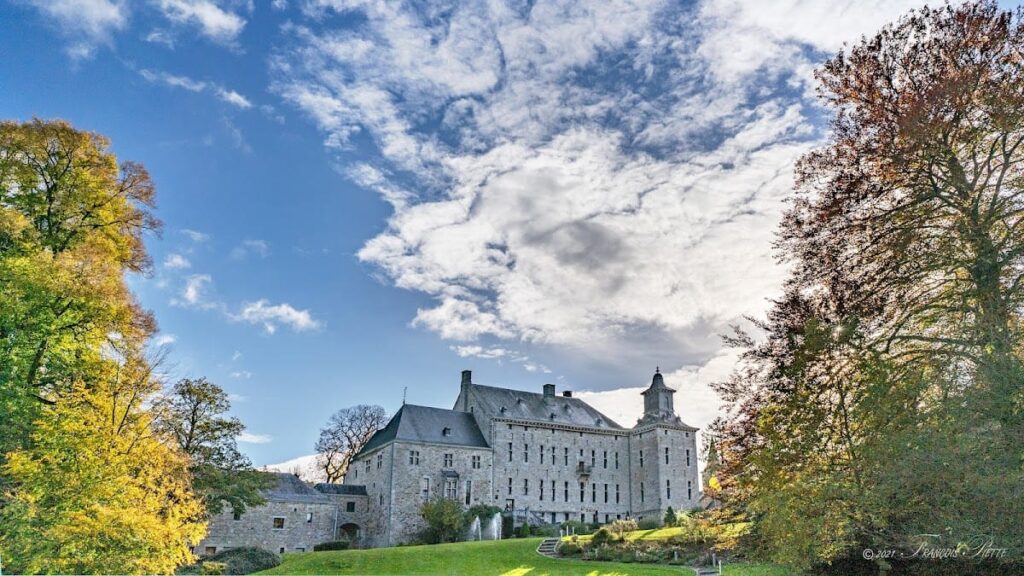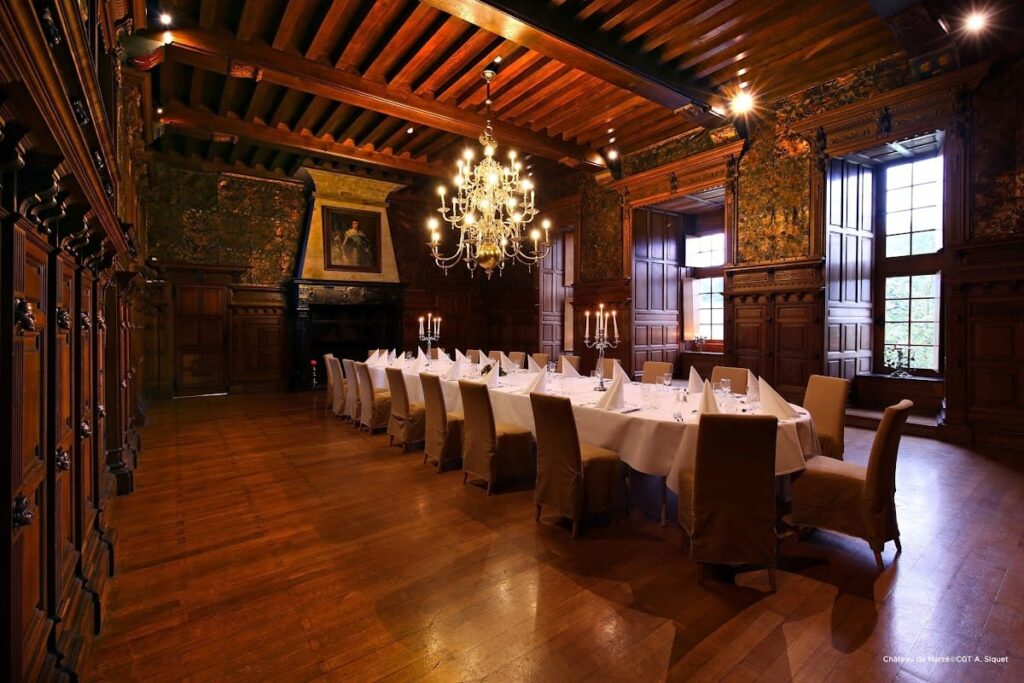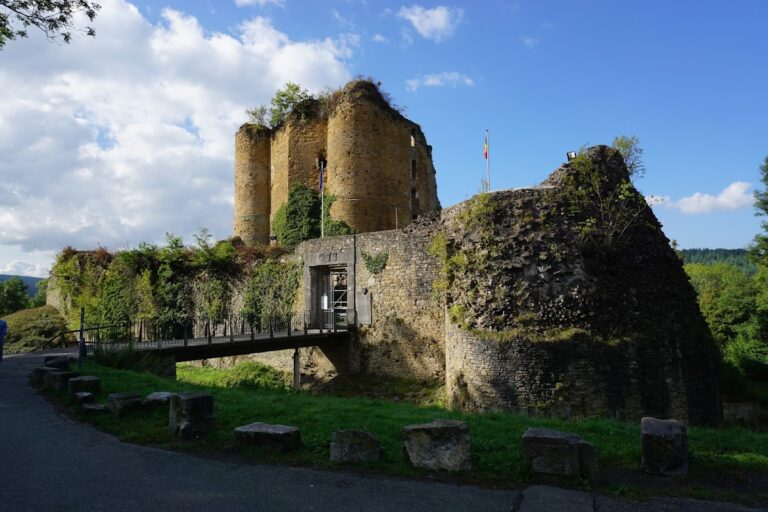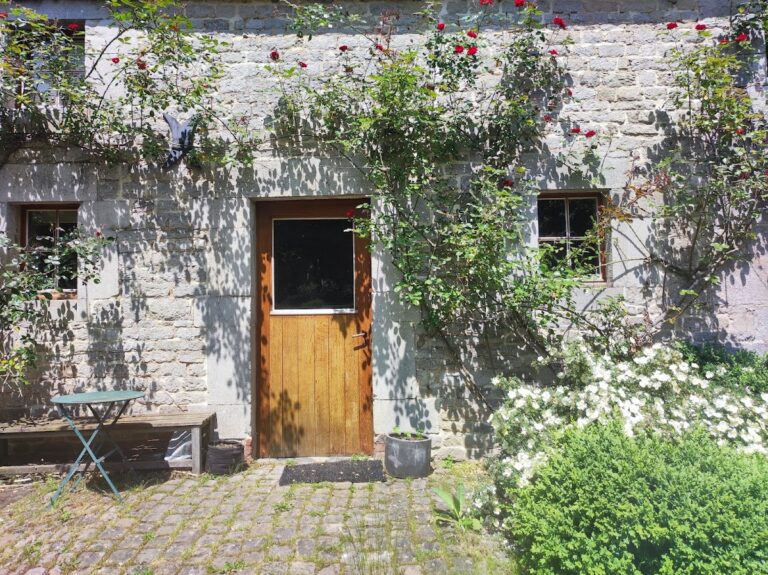Harzé Castle: A Historic Mosan Castle in Aywaille, Belgium
Visitor Information
Google Rating: 4.2
Popularity: Low
Google Maps: View on Google Maps
Official Website: www.chateaudeharze.be
Country: Belgium
Civilization: Medieval European
Remains: Military
History
Harzé Castle is located at Rue de Bastogne 1, 4920 Aywaille, Belgium. Its origins likely trace back to the 9th or 10th century, although the earliest known owners appear in the early 14th century. The castle was initially held by the de Clermont family during this period. Over the centuries, ownership changed several times, reflecting the shifting alliances and marriages among noble families in the region.
In 1547, the castle passed into the hands of Jean de Ligne through his marriage to Margarete von der Marck. Subsequent proprietors included the von Eynatten and de Rahier families, who maintained the estate through the late medieval and early modern periods. The castle’s present form largely dates from the early 17th century, when Count Ernest de Suys undertook significant construction between 1632 and 1645 following his 1631 marriage to Ernestine de Lynden. Their coats of arms, dated 1647, remain displayed above the main entrance.
The 19th century brought new ownership when Pierre Fermont acquired the property in 1873. It later passed to his daughter Louisa in 1886, and then to her cousin Gabrielle Dekens. Gabrielle married Edgar de Potter d’Indoye in 1908, who led extensive restoration and enhancement efforts from 1909 to 1924. These works included architectural additions and interior improvements that shaped the castle’s current appearance.
During World War II, Harzé Castle served a strategic military role. From October 1944, it was the headquarters of the U.S. XVIII Airborne Corps under Major General Matthew Ridgway during the Battle of the Bulge. The castle hosted notable military leaders, including Field Marshal Bernard Montgomery on December 24, 1944, and General Dwight Eisenhower on December 28, 1944. A plaque at the entrance commemorates these visits and the castle’s wartime significance.
After the death of Madame Edgar de Potter d’Indoye in 1949, her son Hervey inherited the estate. In 1973, the province of Liège purchased the castle, repurposing it as a seminar center, event venue, and lodging facility. This use continued until 2020. Since June 2023, ownership transferred to Immobilière du Sart SRL, which is currently renovating the property with plans to reopen in May 2025. The castle has been protected as a classified monument since 1965 by the Royal Commission for Monuments and Sites.
Remains
Harzé Castle is built in the Mosan architectural style, characterized by a courtyard enclosed by round towers. Two large towers from the original fortified structure remain intact, reflecting the castle’s medieval defensive origins. The north entrance features two turrets added in the early 20th century by Edgar de Potter d’Indoye, bearing his coat of arms.
The façade restored between 1909 and 1924 includes semicircular arcades supported by Tuscan columns, a classical architectural element, and windows with triple mullions, typical of the Mosan style. Edgar de Potter d’Indoye also added interior features such as the “Salle des Comtes” (Hall of the Counts), an oriel window projecting from the wall, and three additional windows on the original building.
The castle’s former farm buildings have been converted into the Museum of Milling and Baking. This museum contains six exhibition rooms displaying artifacts that trace the development of milling and baking from medieval water-powered mills to early 20th-century bakery workshops. Operational machinery demonstrates waterwheel-driven millstones, hydraulic levers, and gears. The collection also includes tools related to baking, ice, and chocolate production spanning from the Napoleonic era through the postwar period.
Today, the castle’s preservation is sufficient to maintain its historical architectural elements while supporting its use as a hotel, conference center, and museum venue. The combination of medieval structures and early modern restorations provides a clear view of the castle’s evolution over centuries.










